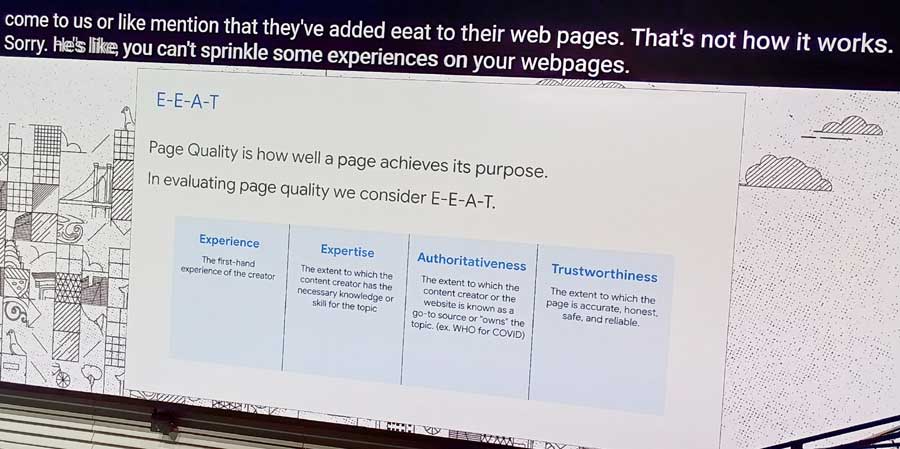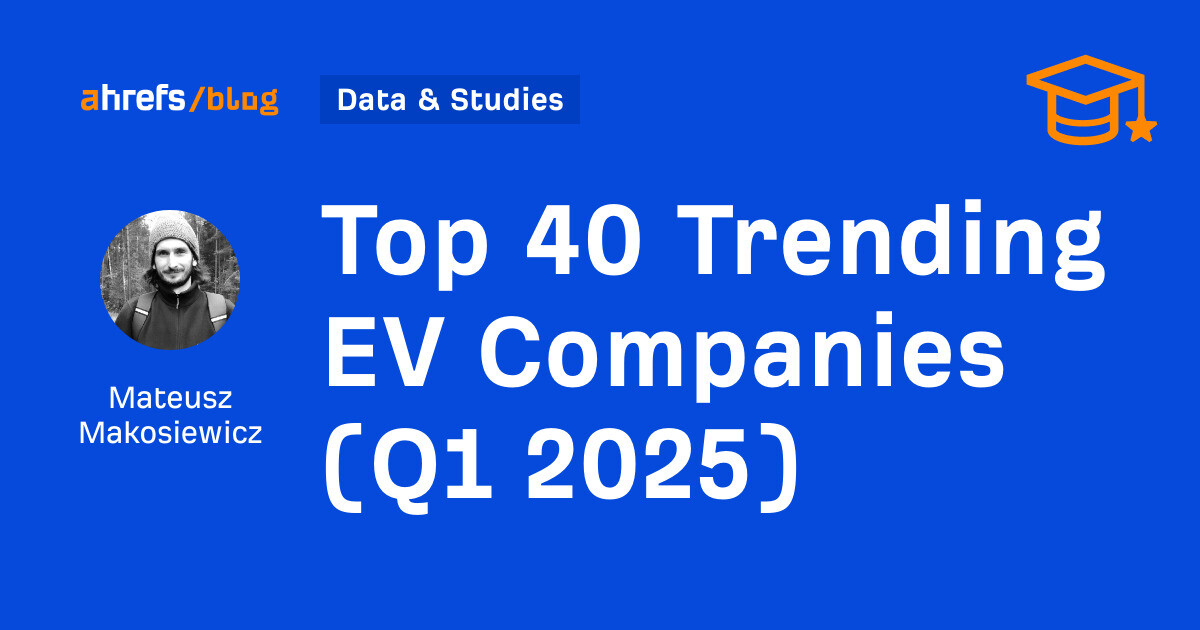Google Confirms You Can’t Add EEAT To Your Web Pages via @sejournal, @martinibuster
Google's John Mueller said that EEAT isn't something that SEOs can add to websites The post Google Confirms You Can’t Add EEAT To Your Web Pages appeared first on Search Engine Journal.

Google’s John Mueller offered an overview of EEAT (Experience, Expertise, Authoritativeness, and Trustworthiness) at the Search Central Live NYC event and affirmed why it matters for some sites and why it’s not something SEOs can add to a website.
EEAT’s Relation To Quality Raters And YMYL Websites
John Mueller started this part of his discussion by explicitly tying the concept to its use as a way for the third party quality raters to provide a more objective judgment about the quality of the search results. He did not say that EEAT was created for SEOs to use as a ranking factor guide, in fact he expressly said that’s not how it works.
What is especially notable is that Mueller says that EEAT comes into play algorithmically for sites that are in topics that affect health or finance, what Google terms Your Money Or Your Life (YMYL) topics.
This is what he said, according to my notes, which contains some paraphrasing:
“EEAT is one of the ways that we look at page quality. EEAT is experience, expertise, authoritativeness and trustworthiness. And this is something that we tell the third party quality raters to watch out for when they’re doing page quality evaluation and something that we take into account when we think the query or a set of pages is on a specific topic where it’s more critical, where we call them your money, your life pages. Where we think that the user actually needs to have something that they can rely on and some signs that they can rely on the content that is present.”
EEAT Is Not Something You Add To Web Pages
In his follow-up statements he dismissed the idea that an SEO can add EEAT to their web pages. EEAT is not something you can add to a website. That’s not how it works. So if adding EEAT is part of what you do for SEO, stop. That’s not SEO.
This is what Mueller said:
“Sometimes SEOs come to us or like mention that they’ve added EEAT to their web pages. That’s not how it works. Sorry, you can’t sprinkle some experiences on your web pages. It’s like, that’s that doesn’t make any sense.”
Photo From Google Search Central Live NYC

EEAT Is Not Needed On Non-YMYL Pages
Lastly, Mueller repeated the point that EEAT is not something that they’re looking for in run of the mill websites. Obviously it’s great if the content has expertise and trustworthiness and so on. But he said it’s not something they’re algorithmically alert for on those kinds of sites, specifically naming recipe sites.
This is what he said:
“From a practical point of view, it’s important to look at this, especially if you’re publishing things on these critical topics, and to look at how you can highlight what it is that you’re already doing so that it’s clear for users.
But if you’re creating a recipe for cookies, you don’t need to have the sidebar with like, ‘this author has created cookies for 27 years.’ I think most people will be able to understand.”
Takeaways
EEAT’s Purpose and Scope
EEAT is used by third-party quality raters to assess search result quality. It was not created by Google as a list of ranking factors for an SEO checklist.
EEAT’s Role in YMYL Topics
Google algorithmically considers EEAT for pages that affect users’ finances or health, which is referred in the Quality Raters Guidelines Your Money or Your Life (YMYL) topics. These are the topic areas where reliability and trust are critical for user safety and confidence and where Google is especially concerned that those qualities are expressed in some way internally and/or externally about those sites. Google doesn’t say what those signals are.
Misconceptions About EEAT in SEO
John Mueller emphasized that EEAT is not something SEOs can “add” to a website the way they might add keywords or internal links. Attempting to “add EEAT” is a misunderstanding of how the concept works within search.
EEAT and Non-YMYL Websites
EEAT is not something that is required in an algorithmic context for non-YMYL sites, such as recipe blogs or other kinds of non-critical content. While it’s useful in a general or marketing sense to to reflect expertise and trust, it’s not a ranking focus for most topics.
EEAT is explicitly created for the third party quality raters to use as a more objective benchmark. That fact gets lost in all the conversations by SEOs about the topic of EEAT. It is also something that’s not particularly important for sites that are outside of YMYL topics. Lastly, EEAT is not something that an SEO can add to their page. Creating a bio with an AI generated image, linking it to a fake LinkedIn profile and then calling it EEAT is not a thing. Trustworthiness, for example, is something that is earned and results in people making recommendations (which doesn’t mean that SEOs should create fake social media profiles and start talking about an author at a website). Nobody really knows what the EEAT signals are.
Featured Image by Shutterstock/RealPeopleStudio

 Kass
Kass 



















![The 2026 AI Search Benchmark Every SEO Leader Needs [Webinar] via @sejournal, @lorenbaker](https://www.searchenginejournal.com/wp-content/uploads/2025/11/1-259.png)











